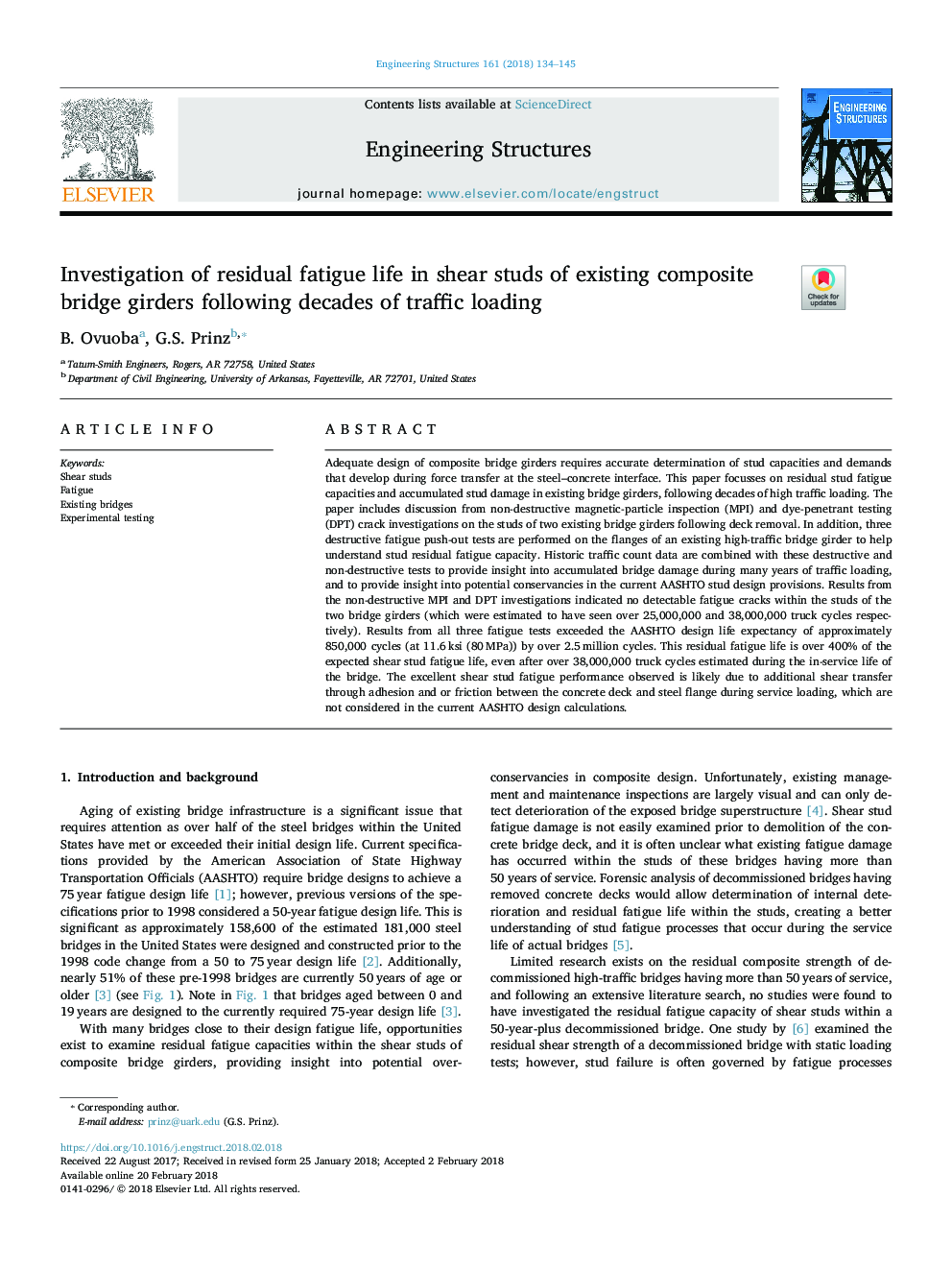| کد مقاله | کد نشریه | سال انتشار | مقاله انگلیسی | نسخه تمام متن |
|---|---|---|---|---|
| 6738133 | 1429066 | 2018 | 12 صفحه PDF | دانلود رایگان |
عنوان انگلیسی مقاله ISI
Investigation of residual fatigue life in shear studs of existing composite bridge girders following decades of traffic loading
ترجمه فارسی عنوان
بررسی عمر خستگی باقی مانده در ستون های برشی پل های موجود در پل کامپوزیت پس از چند دهه بارگیری ترافیکی
دانلود مقاله + سفارش ترجمه
دانلود مقاله ISI انگلیسی
رایگان برای ایرانیان
کلمات کلیدی
ستدس برشی، خستگی، پلهای موجود، آزمایش تجربی،
موضوعات مرتبط
مهندسی و علوم پایه
علوم زمین و سیارات
مهندسی ژئوتکنیک و زمین شناسی مهندسی
چکیده انگلیسی
Adequate design of composite bridge girders requires accurate determination of stud capacities and demands that develop during force transfer at the steel-concrete interface. This paper focusses on residual stud fatigue capacities and accumulated stud damage in existing bridge girders, following decades of high traffic loading. The paper includes discussion from non-destructive magnetic-particle inspection (MPI) and dye-penetrant testing (DPT) crack investigations on the studs of two existing bridge girders following deck removal. In addition, three destructive fatigue push-out tests are performed on the flanges of an existing high-traffic bridge girder to help understand stud residual fatigue capacity. Historic traffic count data are combined with these destructive and non-destructive tests to provide insight into accumulated bridge damage during many years of traffic loading, and to provide insight into potential conservancies in the current AASHTO stud design provisions. Results from the non-destructive MPI and DPT investigations indicated no detectable fatigue cracks within the studs of the two bridge girders (which were estimated to have seen over 25,000,000 and 38,000,000 truck cycles respectively). Results from all three fatigue tests exceeded the AASHTO design life expectancy of approximately 850,000 cycles (at 11.6â¯ksi (80â¯MPa)) by over 2.5â¯million cycles. This residual fatigue life is over 400% of the expected shear stud fatigue life, even after over 38,000,000 truck cycles estimated during the in-service life of the bridge. The excellent shear stud fatigue performance observed is likely due to additional shear transfer through adhesion and or friction between the concrete deck and steel flange during service loading, which are not considered in the current AASHTO design calculations.
ناشر
Database: Elsevier - ScienceDirect (ساینس دایرکت)
Journal: Engineering Structures - Volume 161, 15 April 2018, Pages 134-145
Journal: Engineering Structures - Volume 161, 15 April 2018, Pages 134-145
نویسندگان
B. Ovuoba, G.S. Prinz,
